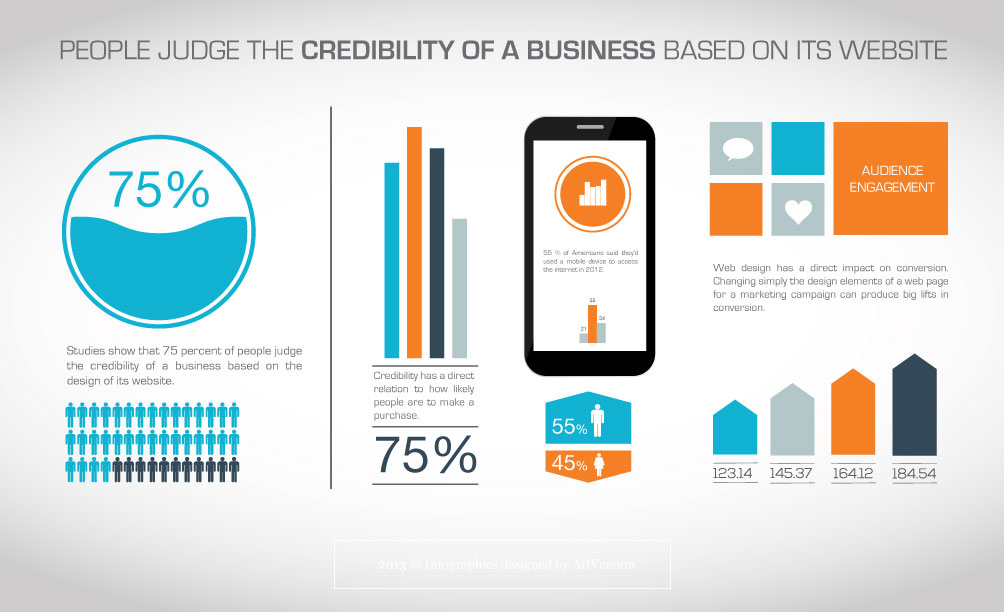In the past, internet sites were straightforward and concentrated on details. Navigating was direct, and style was for desktop computers. Currently, individual experience is key. Information guides layouts for simple navigating. Receptive formats fit various gadgets. Today, dark setting lowers stress, and minimal menus enhance navigation. Interactive attributes engage customers, and strong visuals stand out. AI combination enhances engagement. See exactly how style has developed to improve your on-line journey.
Early Days of Web Design
In the very early days of website design, simpleness reigned supreme. Sites were fundamental, with restricted shades, fonts, and designs. The focus was on providing details instead of showy visuals. Individuals accessed the net via slow-moving dial-up connections, so speed and functionality were vital.
Navigating https://cesarlgcxs.blogginaway.com/27071186/coming-to-be-efficient-in-web-design-suggestions-and-methods-for-producing-a-site-that-is-easy-to-use were straightforward, generally located at the top or side of the page. Websites were made for home computer, as mobile surfing had not been yet prevalent. Web content was king, and developers focused on very easy readability over complex design aspects.
HTML was the primary coding language utilized, and developers needed to work within its restrictions. Computer animations and interactive functions were minimal compared to today's standards. Internet sites were fixed, with little dynamic content or personalized individual experiences.
Rise of User-Focused Layout
With the development of web site style, a shift towards user-focused style principles has actually become progressively prominent. https://alexisqlhcw.blogpayz.com/26603917/enhance-your-capability-to-create-efficient-calls-to-action-in-website-design-by-following-professional-suggestions-that-can-improve-the-performance-of-your-internet-site , producing internet sites that focus on user experience is crucial for involving site visitors and attaining organization objectives. User-focused layout includes comprehending the needs, choices, and actions of your target audience to customize the site's format, web content, and includes as necessary.
Designers currently perform extensive research, such as user surveys and usability testing, to collect understandings and responses straight from individuals. This data-driven method helps in developing user-friendly navigating, clear calls-to-action, and aesthetically enticing interfaces that resonate with visitors. By positioning the user at the center of the style procedure, internet sites can deliver a more individualized and satisfying experience.
Receptive design has actually also emerged as a vital facet of user-focused layout, guaranteeing that internet sites are enhanced for various devices and screen sizes. This flexibility enhances ease of access and functionality, catering to the diverse ways individuals connect with sites today. Essentially, the rise of user-focused style indicates a change towards creating electronic experiences that prioritize the needs and assumptions of the end individual.
Modern Trends in Website Design
Check out the current fads shaping web design today. One prominent fad is dark mode style, using a sleek and modern-day look while lowering eye pressure in low-light environments. https://affiliatemarketingresume54208.ambien-blog.com/32637449/crafting-a-user-friendly-web-site-methods-and-strategies-for-web-design-success is minimalist navigating, streamlining menus and improving customer experience by concentrating on essential elements. Integrating micro-interactions, such as computer animated switches or scrolling effects, can create an extra interesting and interactive web site. Responsive layout stays essential, guaranteeing seamless user experiences throughout various tools. Additionally, utilizing bold typography and unbalanced formats can add visual passion and accentuate details web content.
Incorporating professional website design , like chatbots for consumer assistance or tailored suggestions, enhances individual interaction and streamlines procedures. Ease of access has additionally become a substantial fad, with designers focusing on inclusive layout methods to accommodate varied user needs. Embracing sustainability by maximizing website efficiency for rate and performance is another emerging trend in web design. Collaborating with user comments and information analytics to iterate and improve design constantly is essential for staying appropriate in the ever-evolving digital landscape. By embracing these contemporary trends, you can develop an aesthetically enticing, straightforward web site that reverberates with your audience.
Conclusion
As you review the evolution of internet site layout from the early days to now, you can see how user-focused layout has actually come to be the driving pressure behind modern fads.
Accept the journey of change and adaptation in web design, constantly keeping the customer experience at the forefront.
Remain existing with the most recent trends and modern technologies, and never ever stop advancing your strategy to produce aesthetically sensational and user-friendly sites.
Progress, adapt, and develop - the future of web design is in your hands.
